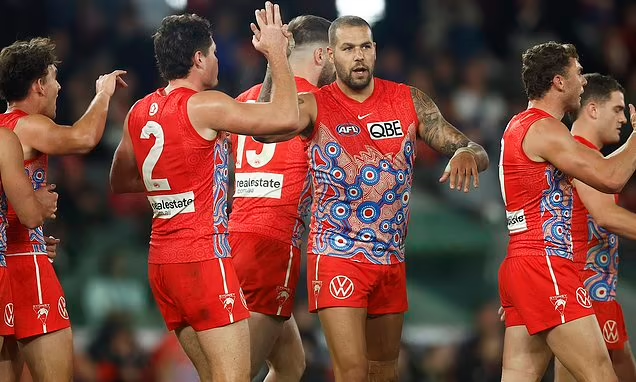
Football Experiences Rare Outbreak of Candor: A Brief Yet Refreshing Change
On Thursday evening, Craig McRae didn’t hesitate to attribute his team’s comically poor errors to his senior players. While it might have been challenging to discuss his winless team’s performance without acknowledging the glaringly obvious, McRae remained willing to address it. It was a rare occurrence where at least one member of Collingwood managed to hit the mark.

Subsequently, Ross Lyon suggested that the entire league had figured out Collingwood’s game plan. Although Lyon couched his remarks in coach-speak, emphasizing the need for execution, the underlying message was clear: “We all know their strategy and how to counter it.”
A week earlier, Brad Scott expressed his desire for his team to adopt a more aggressive and confrontational approach. Had he been Alastair Clarkson, he might have referred to it as playing “unsociable football.”
The Essendon team demonstrated this mentality in their recent match against Hawthorn, directing their aggression towards James Sicily, who subsequently received a report.
This week, the Bombers displayed a noticeable level of intensity and aggression, although at times it appeared somewhat haphazard and inelegant. While Peter Wright’s actions may have crossed a line, Zach Merrett’s relentless tackling and pressure exemplified the kind of assertiveness that could have a significant impact if embraced by the entire Essendon team.
This brings us to the most candid outburst of all, courtesy of Tom Papley. Known for his directness and provocative playing style, Papley didn’t mince words when sharing his thoughts on Essendon.
“You can try to be physical and all, but at the end of the day, you still need to be able to perform consistently throughout the entire match. They were engaging in off-the-ball incidents and such. Whether it’s intentional or not, they’re trying to assert themselves in that way, but ultimately, you need to focus on winning the game.”
He wasn’t entirely incorrect, but he wasn’t entirely correct either. Nonetheless, it’s commendable that he voiced his thoughts. His coach, John Longmire, was somewhat more cryptic in his remarks after the game regarding the Bombers.
Essendon may have approached it the wrong way on Saturday night, but they do need to display more assertiveness. However, that aggression and determination need to be directed towards preventing the opposition from easily penetrating their defense.
While facing one of the top teams like Sydney this round, Essendon’s defensive lapses are concerning. They rank as the second-worst team, only behind West Coast, in defending opposition chains of play from defense, with a staggering 28.8% conversion rate into scores from defensive 50 transitions.
Although it’s a small sample size so far, Essendon’s defensive shortcomings are glaring. Even against lesser opponents like Hawthorn last week, they struggled defensively. Conversely, their opponents, like Sydney, are adept at exploiting defensive vulnerabilities with their speed and skillful ball movement.
Essendon’s defensive issues are not new; they struggled in similar areas last season as well. Addressing these defensive lapses requires a structured approach and a collective commitment from the entire team.
While Essendon has shown improvement in many areas this year, their defensive vulnerabilities remain a significant concern.

Peter Wright’s recent bump is emblematic of a shifting trend in football. Traditionally, forwards like Wright would lead out and, when faced with a defender, initiate physical contact. However, in today’s game, such actions are met with strict consequences, reflecting the AFL’s emphasis on player safety and duty of care.
While Wright’s bump may not have been malicious, it resulted in a significant collision and will likely lead to a suspension of three or four weeks. This incident underscores the importance of players adhering to the AFL’s evolving standards regarding player welfare.
In contrast to previous eras, where such collisions were more commonplace, the modern game places a greater emphasis on protecting players from unnecessary risk. Wright’s bump, while perhaps intended to assert physical presence, now falls afoul of the league’s heightened scrutiny on dangerous play.
Furthermore, the incident raises questions about the game’s tactical evolution. Teams like Hawthorn, for example, have adopted a possession-oriented style of play, prioritizing ball control over aggressive forward entries. However, without effective forward targets like Jack Gunston, teams risk inefficiency in their attacking structures.
Meanwhile, off-field incidents like Travis Cloke’s involvement in on-field altercations highlight the AFL’s stance on maintaining decorum and professionalism among all personnel. Cloke’s intervention likely prevented further escalation but also serves as a reminder of the league’s expectations regarding conduct.
Ultimately, as the AFL continues to refine its approach to player safety and professionalism, incidents like Wright’s bump serve as reminders of the evolving nature of the sport and the need for players and officials to adapt accordingly.






